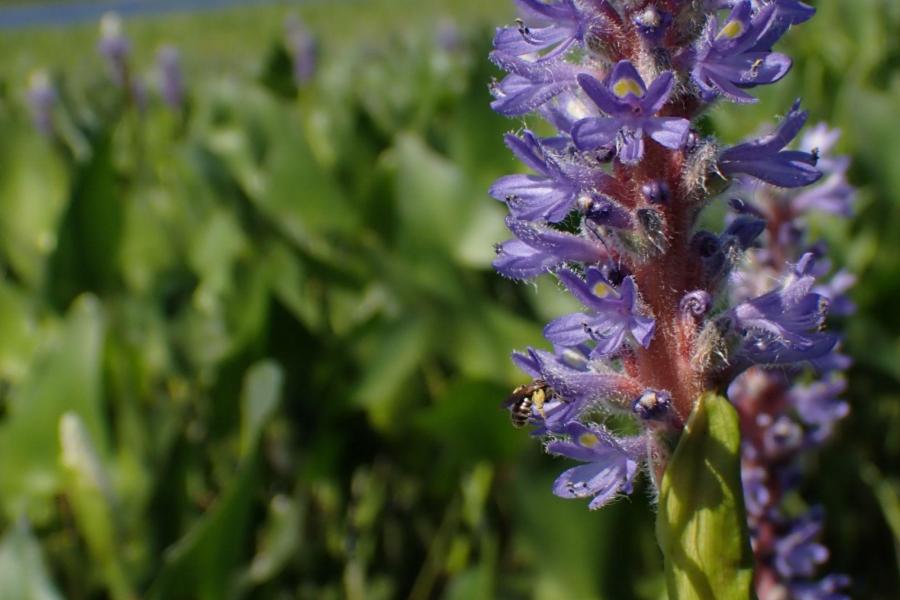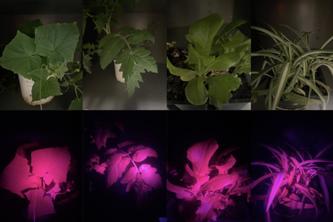
MINNEAPOLIS/ST. PAUL (06/20/2023) — Minnesota is home to a great variety of biodiversity due to its position at a confluence of four of the planet’s major biomes — aspen parklands, prairie grasslands, deciduous forest and coniferous forest. Now, University of Minnesota researchers have confirmed the state is also home to 508 bee species, including numerous rare and specialist species that were recorded in the state for the first time.
New research published in the journal Zootaxa provides a checklist of Minnesota’s bee species and is the result of a collaborative effort between the U of M, Minnesota Department of Natural Resources and other bee experts. Researchers analyzed the findings and specimens from statewide DNR bee surveys, studies from the University’s bee lab, and historic specimens deposited in the University of Minnesota Insect Collection. The work is a foundational step that will help scientists better understand the ecology and conservation needed to support local bee populations.
This work was supported by the Minnesota Environment and Natural Resources Trust Fund as recommended by the Legislative-Citizen Commission on Minnesota Resources (LCCMR).
The researchers found:
- The hundreds of bee species documented included many that weren’t known to exist in Minnesota and were previously only documented further east or south of the state.
- Some species, like Ashton’s cuckoo bumble bee, are extirpated and have not been seen in the wild in Minnesota for over two decades while others, like the variable cuckoo bumble bee, have experienced declines and may be extinct.
- Minnesota is also home to many rare and notable species, such as the endangered rusty-patched bumble bee, Suckley’s cuckoo bumble bee and the pickerelweed long-horned bee.
- Several bee species are specialists, so preserving and restoring native habitats like sandy areas, wetlands, northern forests and prairies is critical.
“When most people think of bees they picture the western honeybee and while they are notable pollinators, they are also a managed, non-native species,” said lead author Zach Portman, a researcher in the U of M Department of Entomology. “Our work found hundreds of bee species in Minnesota, including bumble bees, sweat bees, mining bees and many more that are all important for pollination of native plants and agricultural crops relied on by countless more species.”
The state’s current count of 508 bee species is still preliminary due to many poorly-known species as well as more yet to be discovered. This research serves as a cornerstone for future studies on bees in Minnesota to determine whether species have declined or have merely gone undetected. In addition, more work is needed to understand the habitat and floral requirements of rare and specialist bees.
“This checklist provides the foundation for bee conservation moving forward. We are excited to use the data we’ve collected here to begin to understand which bee species may need action and protection,” said Jessica Petersen, a research scientist at the Minnesota Department of Natural Resources.
About the College of Food, Agricultural and Natural Resource Sciences
The University of Minnesota’s College of Food, Agricultural and Natural Resource Sciences (CFANS) strives to inspire minds, nourish people, and sustainably enhance the natural environment. CFANS has a legacy of innovation, bringing discoveries to life through science and educating the next generation of leaders. Every day, students, faculty, and researchers use science to address the grand challenges of the world today and in the future. CFANS offers an unparalleled expanse of experiential learning opportunities for students and the community, with 12 academic departments, 10 research and outreach centers across the state, the Minnesota Landscape Arboretum, the Bell Museum of Natural History, and dozens of interdisciplinary centers. Learn more at cfans.umn.edu.
- Categories:
- Agriculture and Environment





